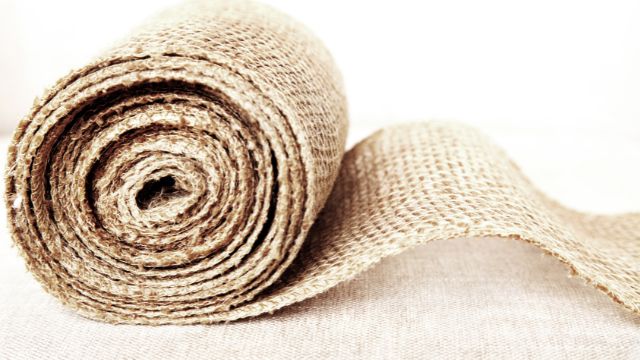The Golden Fiber of India, Jute, has a very important place in Indian agricultural landscape. This crop, with its high versatility and usability, offers a very important addition to Indian economy. In fact, there is hardly any other crop as widely used in industrial sector as jute. With the value going higher and higher each year, Indian states are proving to be most valuable all over the world. Here we will be talking about the 5 major Jute producing states in India in 2024
The “Golden Fibre” of Jute
India’s agricultural and industrial industries depend on jute, the “golden fibre” due to its vivid yellow colour and economic importance. Eastern India grows it commercially in the Ganga Delta because to ideal climate. Heat and humidity make this region ideal for jute farming.
Jute ranks second behind cotton in vegetable fiber production. Its production, use, global consumption, and availability demonstrate its attractiveness. Jute’s breathability, low extensibility, and high tensile strength make it versatile.
Top 5 States Renowned for Jute Production in India
1. West Bengal: The Jute Capital of India
Annual production: 2,900.000 kg/hectre
West Bengal produces 80% of India’s jute. The state’s jute farming success is due to fertile soil, abundant Ganges and Brahmaputra river water, and pleasant temperature. India’s jute capital is West Bengal due to its good growing conditions.
The Gangetic plains of West Bengal provide fertile alluvial soil for jute plants. Nearby huge rivers provide a continuous water supply for this water-intensive crop.
Over decades, West Bengali jute farmers have mastered their trade. They produce high-quality jute using traditional and modern farming techniques. Multiple jute mills make the state a processing and manufacturing powerhouse. West Bengal’s jute supply chain, from agricultural to manufacturing, is prospering.
2. Assam: The Second-in-Line
Annual production: 2,117.000 kg/hectre
Due to its large Brahmaputra River basin and good weather, Assam produces second-most jute in India. Beautiful landscapes and natural resources have been employed to cultivate jute around the state.
Jute grows in Dibrugarh, Jorhat, and Nagaon, Assam. Excellent soil and ample rainfall make these regions suitable for jute farming. Locally and globally, Assam organic jute is popular.
Organic jute production has increased in Assam due to its eco-friendly cultivation. Organic jute appeals to eco-conscious buyers. Assam organic jute is popular in eco-friendly worldwide markets.
3. Bihar: A Rising Star in Jute Production
Annual Production: 1.11 million bales
Bihar is a growing Indian jute producer. State jute production has grown significantly in recent years. Its rich soil, Gangetic plain location, and copious water have helped Bihar grow.
Jute output has risen in Purnia, Katihar, and Samastipur. Bihar farmers increase crop yields and fiber quality using automated farming. The state has also supported jute farmers and agro-industries.
Bihar’s sustainable jute production sets it apart. Jute manufacturing in the state fulfills local requirements and enhances exports.
4. Odisha: Harnessing its Agricultural Potential
Annual Production: 4.5 Thousand Hecters
Indian jute production is rising in Bihar. Recent years have seen increased state jute output. Bihar grew due to its fertile soil, Gangetic plain location, and abundant water.
Jute production has increased in Purnia, Katihar, and Samastipur. Bihar farmers automate farming to boost yields and fiber quality. The state also helps jute growers and agro-industries.
Bihar is out for its sustainable jute production. Jute production in the state meets local needs and boosts exports.
5. Meghalaya: Jute Cultivation Amidst Nature’s Bounty
Annual Production: 56.500 Ton
Jute production thrives in Meghalaya, a picturesque northeastern Indian state. This state’s mountainous topography and abundant rains support jute plants.
Jute thrives in Meghalaya’s rugged East, West, and West Jaintia Hills. Jute thrives on undulating terrain because hills drain and hold moisture.
Year-round rainfall makes Meghalaya suitable for jute farming. Jute needs water, and the state’s copious precipitation supplies it. Meghalaya’s jute crop relies on this stable water supply.
Jute cultivation is popular in Meghalaya as the state discovers its potential. Farmers cultivate jute in the state because to its perfect agro-climatic conditions and government support. This new jute focus has strengthened the state’s agricultural economy and national jute production.
FAQ
- Why is jute considered the “Golden Fiber” of India?
Ans: Jute is known as the “Golden Fiber” because to its bright yellow color and economic significance. It’s vital to India’s agricultural and industrial industries and economy.
- What percentage of the world’s jute does India produce?
Ans: India leads the world in jute farming, producing 70% of it.
- What are the key factors contributing to West Bengal’s success in jute farming?
Ans: Jute farming in Est Bengal is successful due to rich soil, abundant Ganges and Brahmaputra river water, and pleasant Gangetic plain environment. These circumstances favor jute growth.
- Which states in India are known for producing organic jute?
Ans: Organic jute comes from Assam and Odisha. These states’ eco-friendly cultivation practices make organic jute popular locally and abroad.
- How has jute production benefited the socio-economic development of these states?
Ans: Jute production employs numerous farmers, laborers, and skilled workers in Bihar, Meghalaya, and Nagaland. They improved India’s economy and trade by manufacturing jute.
Conclusion
As the Jute cultivation process has become much better and technically finer in the recent days, demand for finer jutes is on the rise. The states that are now producing the maximum Jute are creating a huge economic development. As the Jute production increases, India stands at the forefront.
Also see: Top 10 Largest Producer Of Jute In The World















